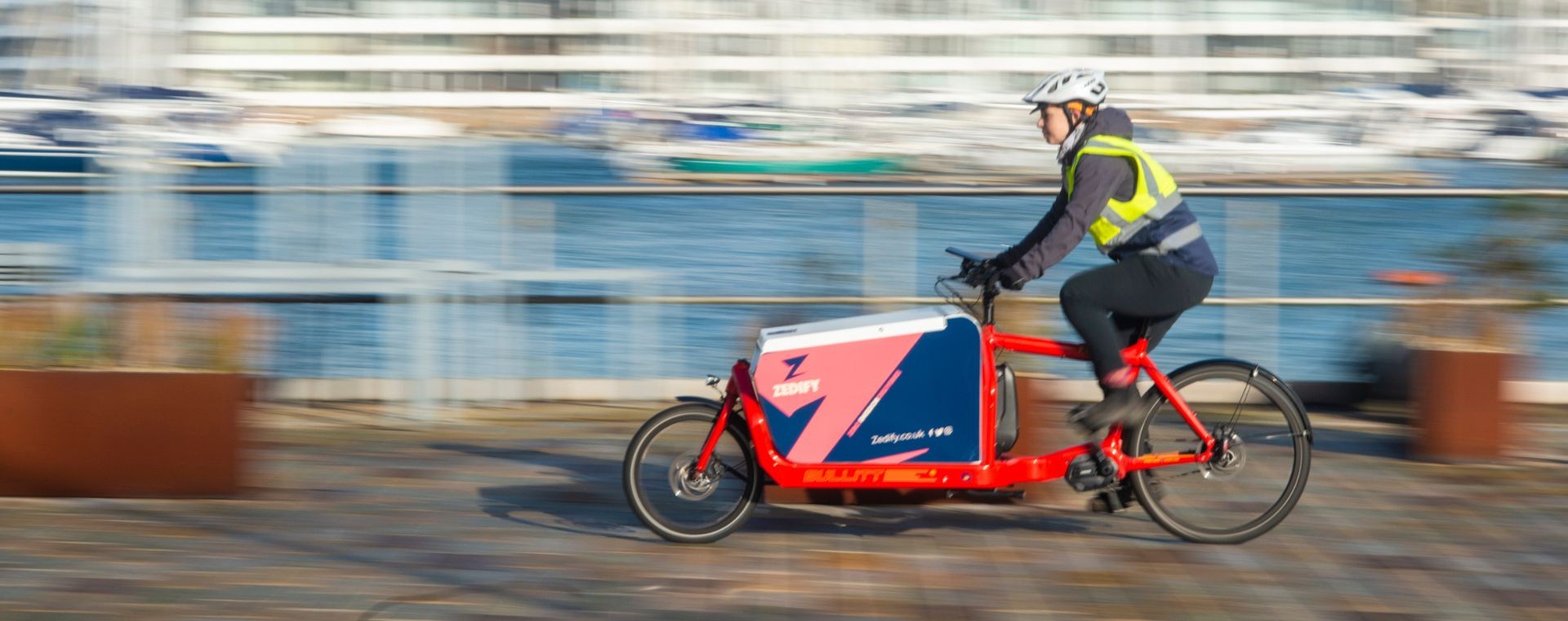
Cyclelanesofthefuture:whatmighttheylooklike?
 October 12th, 2022
October 12th, 2022 Bex Young
Bex Young 3 minute read
3 minute readCycling has long been seen as a secondary mode of transportation for many, but there’s been a recent push to bring cycling into the mainstream as a primary mode of transportation. From cycling to work schemes to updates to the Highway Code, cyclists have more resources than ever before to transition towards choosing a bike over other forms of transport.
One area that still requires some investment and improvement is cycle lanes. At the moment, cycle lanes are often quite disjointed, poorly maintained and difficult to navigate. With any hope, strategic development in cycle lanes will provide a safer, more usable route for cyclists to use. In this article, we’re going to look ahead to find out what our cycle lanes of the future might look like.
Solar-powered cycling lanes
Solar-powered cycling lanes have been discussed before in the past, but it’s only now that developers are rolling out these innovative cycle lanes. Unsurprisingly, the Netherlands is one of the first countries to pioneer this concept, which brings in solar technology to power the road lighting and even heat up the road during winter to avoid ice patches. By installing photovoltaic cells into the cycle lane, it can generate its own power using the sun.
Although the Netherlands is one of the most prominent countries to spearhead this idea, they aren’t alone. South Korea has also rolled out a plan for a 32-kilometre cycle lane that features a solar roof to provide shelter and power the cycle lane.
Starling crossing
Another innovation that points us toward the future of cycle lanes is Starling crossing, an interactive road crossing system that uses intelligent systems to determine the right of way for traffic. The system adapts to real-time traffic conditions to bring all modes of transport together on the road in a safe, structured way, using familiar and understandable markings and colours. Cameras track objects on the road surface and then predict where their next move might be.
It’s already in use in London and it’s showing excellent results for pedestrians, cyclists and other road users.
Cycling motorways
Another innovation for cycle lanes that has already shown promise is the Radschnellweg in Germany. Dubbed the world’s first bike motorway (or autobahn), this cycle lane comprises 101 kilometres of dedicated road for cyclists.
These cycle lanes have no traffic lights and don’t allow any motorised vehicles to use the lane. What’s more, it’s fully illuminated and connects up large swathes of Germany for cyclists, showing an excellent blueprint for what cycle lanes of the future could look like.
The future looks bright for cyclists
If any of these novel implementations prove to take hold, then cyclists are definitely going to enjoy a much safer and more comfortable riding experience. With any hope, these improvements and innovations will encourage more people to get on the saddle, ditch the car and help the environment and their wellbeing by enjoying a cycle on a futuristic cycle lane.
—
Thanks to our guest author Ross Hansen for this post.
For more, check out Share the Road: Cyclist & Pedestrian Safety Awareness for Drivers: https://www.
For more on cycle infrastructure improvements, check out: https://www.bloomberg.com/news/articles/2022-10-10/cities-will-get-up-to-1-million-for-cycling-infrastructure




